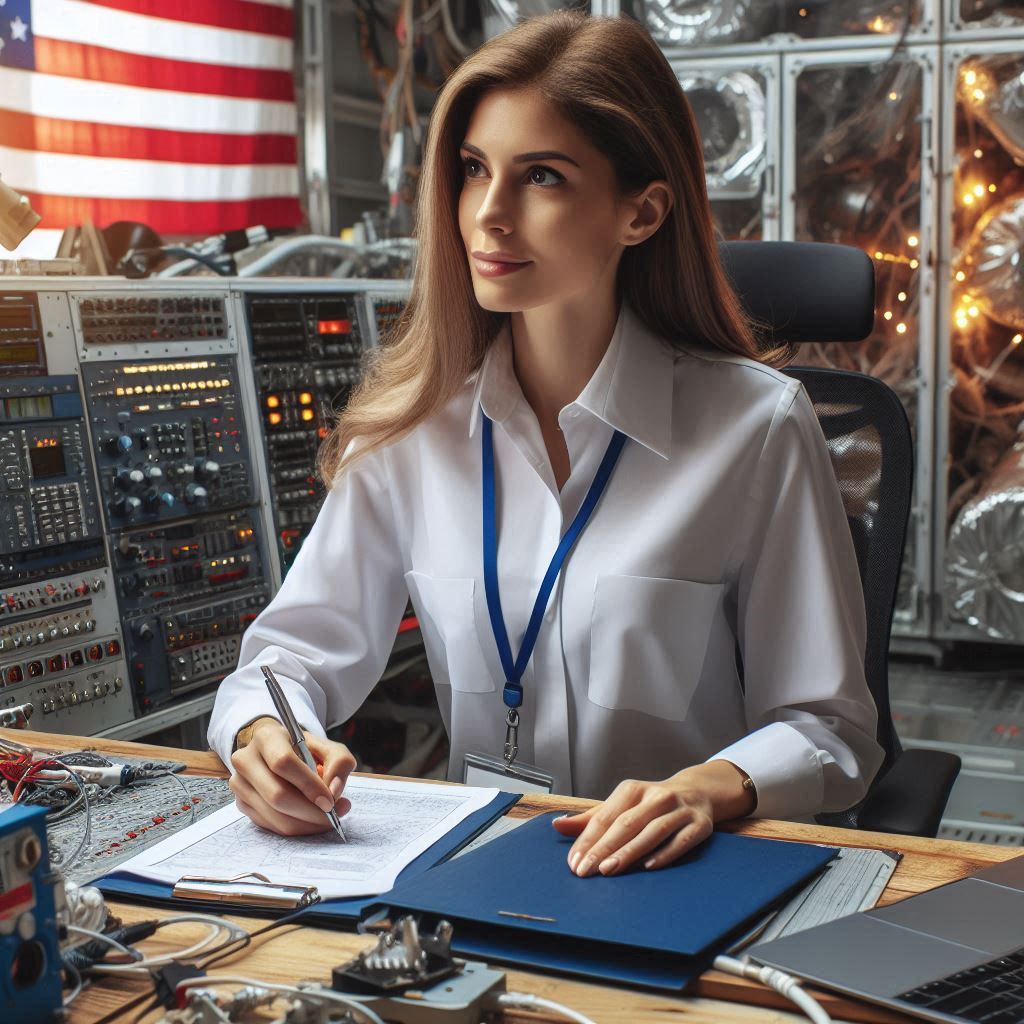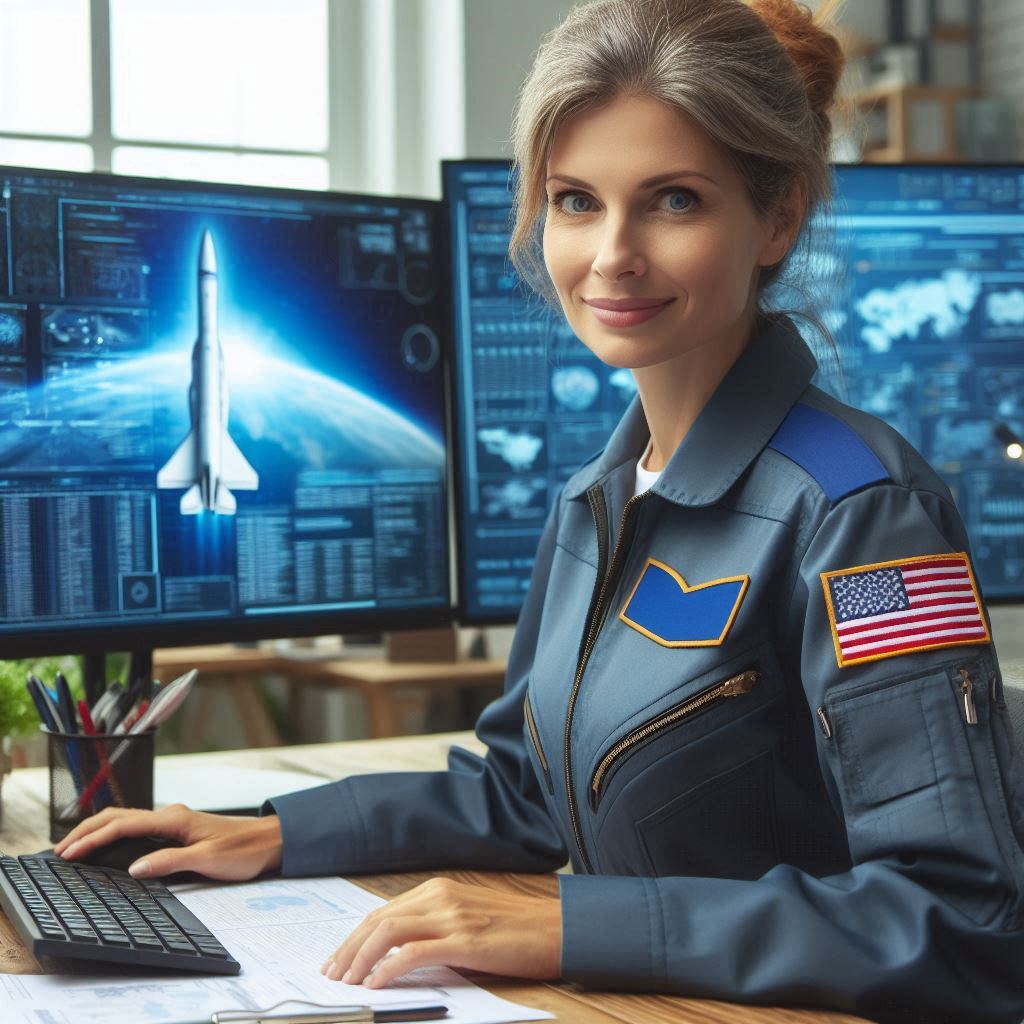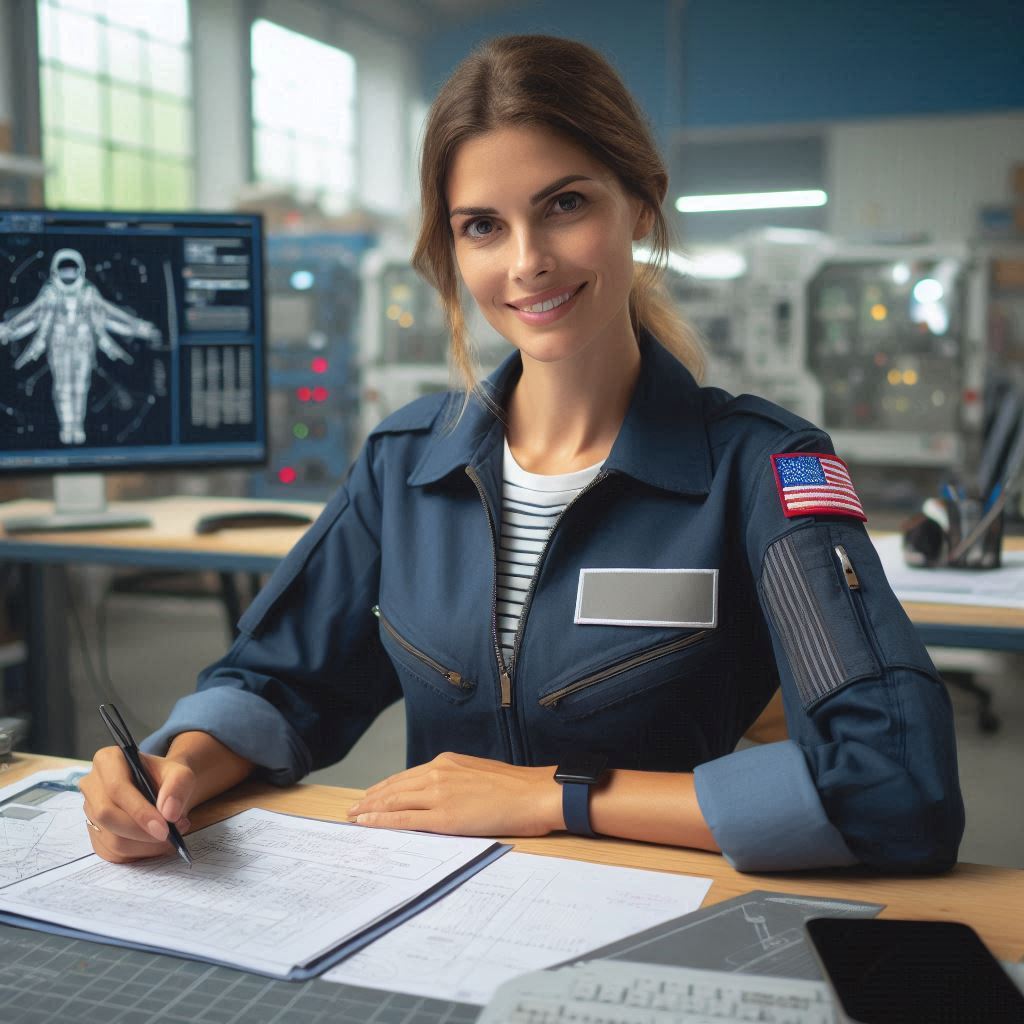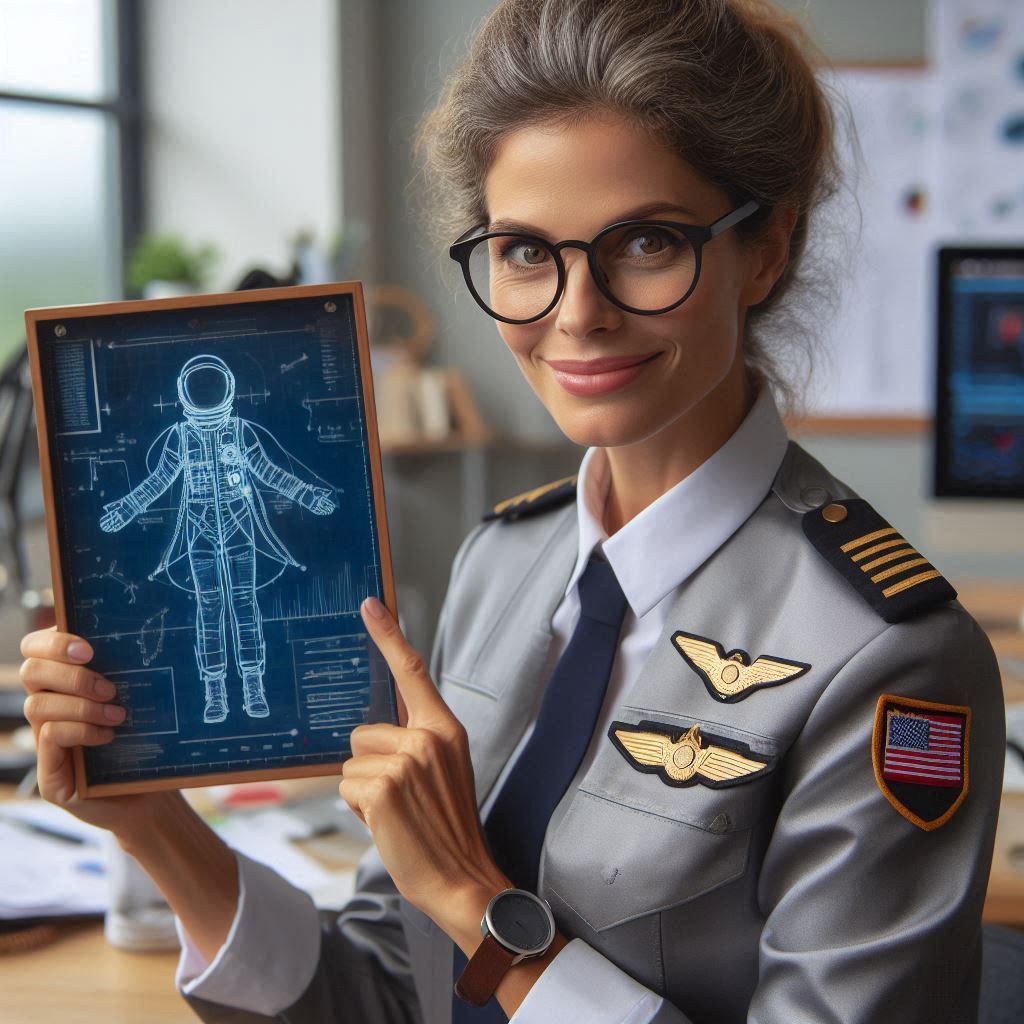Introduction
Aerospace engineers play a pivotal role in ensuring aviation safety, a fundamental aspect of the aerospace industry.
Their expertise is critical in designing, testing, and analyzing aircraft and spacecraft systems to meet rigorous safety standards.
Aerospace engineers work meticulously to prevent malfunctions, enhance performance, and improve the overall reliability of aviation systems.
Their responsibilities include developing advanced technologies and solutions that address various safety challenges, ensuring that both commercial and military aircraft operate safely and efficiently.
The importance of aviation safety cannot be overstated.
It encompasses the protection of passengers, crew, and cargo, while also maintaining the operational efficiency of aircraft.
In an industry where safety is paramount, aerospace engineers contribute significantly to minimizing risks and preventing accidents.
They apply their knowledge to ensure that every component and system adheres to stringent safety regulations and standards.
Aviation safety is critical for maintaining public trust in air travel.
As technology advances, aerospace engineers continually innovate to enhance safety measures and respond to emerging challenges.
Their work supports the industry’s commitment to high safety standards and helps build confidence among passengers and stakeholders.
Through their dedication and expertise, aerospace engineers play an essential role in advancing aviation safety and ensuring the continued success of the aerospace industry.
Overview of Aerospace Engineers
Role of Aerospace Engineers in Designing
Aerospace engineers are central to the creation of safe and efficient aircraft and spacecraft.
They are responsible for designing systems that meet rigorous performance and safety standards.
Engineers use computer-aided design (CAD) tools to develop detailed models of aircraft and spacecraft.
These models are subjected to simulations to predict their behavior under various conditions.
In the development phase, aerospace engineers oversee the construction of prototypes.
They work closely with manufacturers to ensure adherence to design specifications.
Engineers also manage the testing process, which includes ground and flight tests.
These tests validate the performance and safety of the systems, ensuring that they meet all regulatory requirements.
During testing, aerospace engineers perform a range of evaluations.
They conduct wind tunnel tests to study aerodynamic properties, system simulations for functional analysis, and flight tests to assess real-world performance.
Analyzing test data helps engineers identify potential issues and make necessary design adjustments to enhance safety.
Specialized Skills and Knowledge Required for a Career in Aerospace Engineering
A career in aerospace engineering demands a unique set of skills and knowledge.
Engineers must possess a deep understanding of aerodynamics, propulsion, and structural mechanics.
Proficiency in CAD software and simulation tools is essential for creating and analyzing designs.
Engineers need strong analytical skills to interpret complex data and solve intricate problems.
Attention to detail is crucial in aerospace engineering, as small design flaws can impact safety and performance.
Engineers must also have a thorough understanding of safety regulations and industry standards.
Effective communication skills are important for collaborating with multidisciplinary teams and presenting technical information clearly.
Continuous learning is vital due to the rapid advancement in aerospace technologies.
Engineers must stay updated with the latest developments and innovations to maintain expertise and ensure that their designs incorporate the most recent advancements.
Various Sectors Where Aerospace Engineers Work
Aerospace engineers contribute to aviation safety across various sectors.
Government agencies, such as NASA and the FAA, employ engineers to develop and enforce safety regulations.
These agencies conduct research and oversee compliance with established safety standards, ensuring that aerospace systems meet rigorous criteria.
Aerospace companies, including major players like Boeing and Airbus, are key employers of aerospace engineers.
These companies focus on designing and manufacturing aircraft and spacecraft.
Engineers in these organizations handle everything from initial design to final testing and quality assurance, ensuring that their products are safe and efficient.
Research institutions also play a significant role in aerospace engineering.
Engineers at these institutions work on innovative projects, exploring new materials, technologies, and methodologies.
Their research often leads to breakthroughs that enhance the safety and performance of aerospace systems.
Institutions such as MIT and Caltech are known for their contributions to aerospace research and technology advancement.
Basically, aerospace engineers are integral to the design, development, and testing of aircraft and spacecraft.
Their specialized skills in aerodynamics, propulsion, and testing are essential for creating safe and effective aerospace systems.
They work across government agencies, aerospace companies, and research institutions, contributing to advancements in aviation safety and technology.
Responsibilities of Aerospace Engineers in Ensuring Aviation Safety
Conducting Risk Assessments and Simulations
Aerospace engineers conduct thorough risk assessments to identify potential hazards in aircraft design.
They use simulation tools to model various scenarios and evaluate how different design elements respond under stress.
These simulations help engineers predict potential failures and understand their impact on aircraft performance and safety.
Engineers use Computational Fluid Dynamics (CFD) to simulate airflow and identify aerodynamic issues.
They also employ structural simulations to test how materials and components withstand forces during flight.
By analyzing these simulations, engineers can make necessary adjustments to mitigate risks.
Advanced software tools help engineers assess failure modes and effects.
They model how systems might fail and evaluate the consequences of such failures.
This proactive approach allows engineers to address potential issues before they become critical.
Importance of Adhering to Safety Regulations
Adhering to safety regulations and standards set by organizations like the Federal Aviation Administration (FAA) is vital for ensuring aviation safety.
Aerospace engineers must follow these regulations to design, test, and certify aircraft that meet strict safety criteria.
The FAA establishes guidelines for aircraft design, manufacturing, and maintenance.
Compliance with these guidelines ensures that aircraft operate safely and reliably.
Engineers must stay current with regulatory updates and integrate them into their design and testing processes.
Safety standards also include rigorous testing and certification procedures.
Engineers must conduct extensive tests to validate that aircraft meet all safety requirements before they are approved for operation.
This includes testing under various conditions to ensure performance and safety.
Role in Investigating Accidents and Incidents
Aerospace engineers play a key role in investigating accidents and incidents.
They analyze data from black boxes, flight data recorders, and eyewitness reports to determine the causes of failures.
This investigation process helps identify flaws in design, maintenance, or operational procedures.
Engineers work with investigative agencies to reconstruct accident scenarios and understand the sequence of events.
They examine aircraft components and systems to identify any failures or malfunctions.
The insights gained from these investigations lead to improvements in safety protocols and engineering practices.
By learning from past incidents, aerospace engineers contribute to the development of enhanced safety measures.
They update design standards and operational procedures to prevent similar occurrences in the future.
Continuous improvement based on incident analysis is crucial for advancing aviation safety.
Transform Your Career Today
Unlock a personalized career strategy that drives real results. Get tailored advice and a roadmap designed just for you.
Start NowAerospace engineers significantly contribute to aviation safety through risk assessments, adherence to safety regulations, and accident investigations.
Their work ensures that aircraft designs are safe, comply with regulatory standards, and are continuously improved based on incident analysis.
These efforts are essential for maintaining high safety standards and preventing accidents in aviation individuals involved in air travel.
Read: Freelance vs. Firm: Career Paths for US Architects
Designing and Testing Aircraft Systems
When it comes to ensuring aviation safety, aerospace engineers play a critical role in designing and testing aircraft systems.
Let’s delve into how these professionals contribute to the safety and reliability of aircraft through their expertise in various areas.
How aerospace engineers design and test aircraft systems
One of the key aspects of aerospace engineering is the design and development of propulsion systems.
Engineers must ensure that engines are powerful, fuel-efficient, and reliable.
By using CAD software, they can create detailed models of engine components, allowing for precise calculations and analysis.
This technology enables engineers to optimize the performance of propulsion systems and minimize potential risks.
Avionics, which encompass the electronic systems used in aircraft, also require meticulous design and testing.
Aerospace engineers work on developing navigation, communication, and monitoring systems that are essential for safe flight operations.
By employing CAD software, they can integrate these complex systems seamlessly, ensuring that they function effectively in all conditions.
Use of advanced technology
Control systems, including flight control and landing gear mechanisms, play a crucial role in ensuring the stability and maneuverability of aircraft.
Engineers use advanced simulation tools to model and test these systems, ensuring that they respond accurately to pilot commands and maintain proper aircraft control.
Through rigorous testing in simulated and real-world environments, engineers can identify and address any potential issues before they pose a safety risk.
Wind tunnel testing is a vital component of the aircraft development process.
Engineers use wind tunnels to simulate different flight conditions and evaluate the aerodynamic performance of aircraft designs.
By analyzing factors such as lift, drag, and stability, engineers can optimize the overall performance of the aircraft.
This testing ensures that the aircraft can operate safely and efficiently in various situations, including takeoff, landing, and cruising.
Significance of rigorous testing and certification processes
Before an aircraft is certified for operation, it must undergo extensive testing to ensure its safety and reliability.
Aerospace engineers work closely with regulatory authorities to meet stringent certification requirements.
Testing includes structural integrity tests, system performance evaluations, and safety assessments to validate the aircraft’s compliance with regulatory standards.
Through this rigorous process, engineers can identify and address any potential safety hazards, ensuring that the aircraft meets the highest safety standards.
In review, aerospace engineers play a crucial role in designing and testing aircraft systems to ensure aviation safety.
By utilizing advanced technology, conducting rigorous testing, and adhering to certification processes, these professionals contribute to the development of safe and reliable aircraft.
Their expertise and dedication are essential in maintaining the high safety standards of the aviation industry.
Read: Post-Pandemic Design Trends: US Architects Adapt
Implementing Safety Innovations
How aerospace engineers develop and implement safety innovations
Aerospace engineers play a crucial role in advancing aviation safety through the development and implementation of safety innovations.
By continually pushing the boundaries of technology and engineering, these professionals contribute to making air travel safer for everyone involved.
One way aerospace engineers contribute to aviation safety is by developing and implementing improved materials.
By researching and testing new materials that are stronger, lighter, and more durable, engineers can enhance the structural integrity of aircraft, reducing the risk of mechanical failures that could lead to accidents.
Role of aerospace engineers in integrating new technologies
Additionally, aerospace engineers work on designing and integrating advanced sensors and software systems into aircraft.
These technologies help monitor various parameters during flight, such as temperature, pressure, and engine performance, providing real-time data to pilots and ground control to ensure safe operations.
A significant advancement in aviation safety is the use of artificial intelligence (AI) and autonomous systems.
Aerospace engineers are at the forefront of implementing AI algorithms and autonomous features in aircraft to improve decision-making, navigation, and overall safety measures.
These technologies can help prevent human errors and respond quickly to potential threats or emergencies.
Examples of recent advancements in aerospace engineering
For example, the development of automatic emergency landing systems in airplanes is a recent advancement that has greatly enhanced aviation safety.
These systems can take control of the aircraft and safely land it in case of a pilot incapacitation or other critical situations, reducing the likelihood of accidents due to human error.
Another notable innovation in aerospace engineering is the use of predictive maintenance systems.
By incorporating sensors that monitor the health of aircraft components and systems in real-time, engineers can detect potential issues before they escalate into safety hazards, allowing for proactive maintenance and preventing unexpected failures during flights.
Moreover, advancements in aerodynamics, propulsion systems, and fuel efficiency have also contributed to enhancing aviation safety.
Aerospace engineers are constantly working on improving the performance and reliability of aircraft components to ensure optimal functioning under all conditions, reducing the risk of malfunctions that could compromise safety.
Basically, aerospace engineers play a vital role in developing and implementing safety innovations that have a direct impact on aviation safety.
Through their expertise and commitment to excellence, these professionals continue to push the boundaries of technology and engineering to make air travel safer for passengers and crew alike.
Read: Impact of Local Building Codes on US Architecture.

Collaboration with Other Professionals
Importance of Collaboration Between Aerospace Engineers and Other Professionals
Collaboration between aerospace engineers and other aviation professionals is crucial for ensuring aviation safety.
Aerospace engineers work closely with pilots, air traffic controllers, and maintenance technicians to develop and maintain safe and efficient systems.
This teamwork ensures that all aspects of aviation‘from aircraft design to operational procedures‘are optimized for safety.
Transform Your Career Today
Unlock a personalized career strategy that drives real results. Get tailored advice and a roadmap designed just for you.
Start NowEngineers rely on pilots‘ feedback to understand how aircraft perform in real-world conditions.
This information helps engineers design better systems and improve safety features.
Similarly, air traffic controllers provide valuable insights into how aircraft interact with airspace management systems.
Their input helps engineers develop technologies that enhance situational awareness and navigation.
Maintenance technicians play a vital role in implementing and maintaining safety protocols.
Engineers and technicians work together to ensure that aircraft are maintained according to safety standards.
This collaboration helps in addressing potential issues before they affect flight safety.
How Interdisciplinary Teams Work Together to Address Safety Challenges
Interdisciplinary teams address aviation safety challenges by combining expertise from various fields.
Aerospace engineers, pilots, air traffic controllers, and maintenance personnel collaborate to solve complex problems.
These teams analyze safety data, develop solutions, and implement changes to improve overall safety.
For example, when an aircraft safety issue arises, an interdisciplinary team investigates the problem.
Aerospace engineers analyze the technical aspects, while pilots and maintenance technicians provide practical insights.
Together, they identify the root cause and develop effective solutions.
These teams also work on proactive safety measures. They conduct simulations and tests to evaluate potential safety improvements.
By integrating diverse perspectives and expertise, interdisciplinary teams create more robust and effective safety solutions.
Role of Communication and Teamwork in Aviation Safety Initiatives
Effective communication and teamwork are essential for successful aviation safety initiatives.
Clear communication ensures that all team members are aware of safety protocols and procedures.
Regular updates and briefings keep everyone informed about changes and improvements.
Aerospace engineers must communicate technical information clearly to pilots and technicians.
This clarity helps ensure that safety systems are used correctly and maintained properly.
In turn, pilots and technicians must relay their experiences and observations to engineers.
This feedback loop is vital for refining safety measures.
Teamwork fosters a collaborative environment where all professionals contribute to safety goals.
Joint efforts lead to comprehensive solutions that address various safety aspects.
Collaborative problem-solving helps prevent errors and enhances the overall safety culture within the aviation industry.
Essentially, collaboration between aerospace engineers and other aviation professionals is essential for ensuring safety.
Interdisciplinary teams combine expertise to tackle safety challenges and implement solutions.
Effective communication and teamwork play a crucial role in achieving successful outcomes in aviation safety initiatives.
By working together, aviation professionals create safer, more reliable air travel for everyone.ll safety of the aviation industry.
Read: The Intersection: Architecture & Tech in Modern USA.
Training and Education Requirements for Aerospace Engineers
Educational Pathways and Qualifications
To become an aerospace engineer, individuals typically start with a bachelor‘s degree in aerospace engineering or a related field.
Programs in aerospace engineering cover subjects like aerodynamics, propulsion, and materials science.
A solid foundation in mathematics, physics, and engineering principles is crucial.
Many aerospace engineers pursue a master‘s degree or higher for advanced positions or specialized roles.
Some positions may also require a Professional Engineer (PE) license, depending on job responsibilities and location.
Completing a degree from an accredited institution is essential for meeting industry standards and gaining employment.
Importance of Ongoing Training and Professional Development
Ongoing training and professional development are vital for aerospace engineers to stay current with new technologies and industry trends.
The aerospace industry is rapidly evolving, with advancements in materials, systems, and technology.
Continuous learning helps engineers remain proficient in the latest techniques and standards.
Professional development opportunities, such as workshops, seminars, and online courses, enable engineers to update their skills and knowledge.
This ongoing education ensures that aerospace engineers can effectively address emerging challenges and implement cutting-edge solutions.
Staying informed about industry trends is essential for maintaining high standards of aviation safety and engineering excellence.
Role of Internships, Co-op Programs, and Industry Certifications
Internships and co-op programs offer invaluable practical experience for aspiring aerospace engineers.
These opportunities allow students to apply theoretical knowledge in real-world settings and gain hands-on experience.
Working with experienced engineers helps build technical skills and understand industry practices.
Internships and co-op programs also provide networking opportunities and can lead to full-time employment upon graduation.
Industry certifications, such as those from the American Institute of Aeronautics and Astronautics (AIAA), further validate an engineer‘s expertise.
Certifications demonstrate proficiency in specific areas of aerospace engineering and enhance career prospects.
They also signal to employers that an engineer is committed to maintaining high standards of practice.
Aerospace engineers play a crucial role in ensuring aviation safety through rigorous education and continuous professional development.
Obtaining a relevant degree is the first step toward a career in aerospace engineering.
Ongoing training helps engineers stay current with technological advancements and industry trends.
Practical experience gained through internships and co-op programs is essential for applying knowledge and developing skills.
Industry certifications further enhance an engineer‘s qualifications and credibility.
Together, these elements ensure that aerospace engineers contribute effectively to the safety, reliability, and advancement of aviation technology.
You Might Also Like: Understanding Aerodynamics in Aerospace Engineering
Conclusion
Aerospace engineers play a critical role in aviation safety by designing, developing, and maintaining aircraft systems to ensure their reliability and safety.
They contribute to aviation safety through rigorous testing, analysis, and innovation to continually improve aircraft performance and safety standards.
By focusing on aerodynamics, materials science, and control systems, aerospace engineers help prevent accidents and enhance aviation safety for passengers and crews.
It is evident that without the expertise and dedication of aerospace engineers, the aviation industry would not be able to maintain its high safety standards and technological advancements.
Therefore, it is essential to recognize and appreciate the significant impact that aerospace engineers have on ensuring the safety and reliability of aircraft systems.
For those interested in learning more about aerospace engineering and its crucial role in aviation safety, exploring this field further can provide valuable insights into the future of aviation safety.
Ultimately, aerospace engineers continue to be at the forefront of innovation and technological advancements that will shape the future of aviation safety for generations to come.
[E-Books for Sale]
The Big Book of 500 High-Paying Jobs in America: Unlock Your Earning Potential
$19.99 • 500 High-Paying Jobs • 330 pages
Explore 500 high-paying jobs in America and learn how to boost your career, earn more, and achieve success!
See All 500 High-Paying Jobs of this E-Book
1001 Professions Without a Degree: High-Paying American Jobs You Can Start Now
$19.99 • 1001 Professions Without a Degree • 174 pages
Discover 1001 high-paying jobs without a degree! Unlock career tips, skills, and success strategies for just $19.99!




